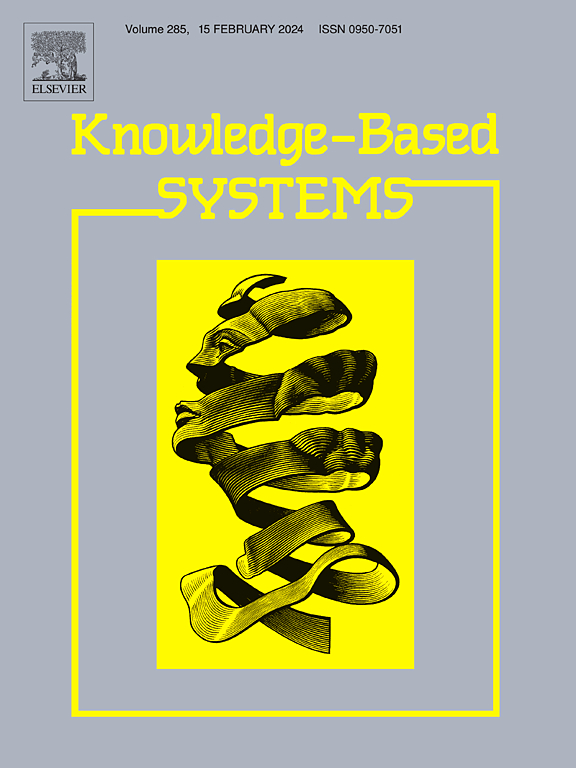A Structure-Feature Dynamic Decoupling GNN architecture for link prediction
IF 7.6
1区 计算机科学
Q1 COMPUTER SCIENCE, ARTIFICIAL INTELLIGENCE
引用次数: 0
Abstract
Link prediction aims to forecast the missing links within a graph, which is widely applied in various fields such as recommender systems and drug analysis. Graph Neural Networks (GNNs) have emerged as strong baselines for link prediction due to their ability to simultaneously capture the topological structure and node features of graphs. Moreover, existing approaches use the node features as the initial embedding of nodes and input them into GNNs for message passing and updating. However, these methods assume that the features and topology in graphs are homophonic and do not take into account the possible incompatibility that is common and even very severe in some graphs, harming the performance of GNNs in link prediction.
To address this issue, we propose a Structure-Feature Dynamic Decoupling GNN architecture (SFDDGNN), which mainly consists of two decoupled embedding pipelines and the dynamic gate fusion mechanism. Specifically, to avoid the incompatibility, we first utilize a GraphSAGE-based structure encoder to capture the topological structure in one pipeline. Then we construct a graph contrastive learning module to train the node feature embedding in the other pipeline. Finally, we dynamically aggregate the topology and features embedding based on the graph data distribution knowledge. Experimental results on three real-world datasets of link prediction demonstrate that SFDDGNN outperforms the state-of-the-art baselines by up to 3.54% and 6.55% in terms of AP and AUC, respectively.
一种用于链路预测的结构-特征动态解耦GNN结构
链接预测旨在预测图中缺失的链接,广泛应用于推荐系统和药物分析等各个领域。图神经网络(gnn)由于能够同时捕获图的拓扑结构和节点特征而成为链路预测的强大基线。此外,现有方法使用节点特征作为节点的初始嵌入,并将其输入到gnn中进行消息传递和更新。然而,这些方法假设图中的特征和拓扑是同音的,没有考虑到在某些图中常见甚至非常严重的不兼容性,从而损害了gnn在链路预测中的性能。为了解决这一问题,我们提出了一种结构-特征动态解耦GNN架构(SFDDGNN),该架构主要由两个解耦的嵌入管道和动态门融合机制组成。具体来说,为了避免不兼容性,我们首先利用基于graphsage的结构编码器来捕获一个管道中的拓扑结构。然后构造一个图对比学习模块来训练嵌入到其他管道中的节点特征。最后,基于图数据分布知识动态聚合拓扑和特征嵌入。在三个真实的链路预测数据集上的实验结果表明,SFDDGNN在AP和AUC方面分别比最先进的基线高出3.54%和6.55%。
本文章由计算机程序翻译,如有差异,请以英文原文为准。
求助全文
约1分钟内获得全文
求助全文
来源期刊

Knowledge-Based Systems
工程技术-计算机:人工智能
CiteScore
14.80
自引率
12.50%
发文量
1245
审稿时长
7.8 months
期刊介绍:
Knowledge-Based Systems, an international and interdisciplinary journal in artificial intelligence, publishes original, innovative, and creative research results in the field. It focuses on knowledge-based and other artificial intelligence techniques-based systems. The journal aims to support human prediction and decision-making through data science and computation techniques, provide a balanced coverage of theory and practical study, and encourage the development and implementation of knowledge-based intelligence models, methods, systems, and software tools. Applications in business, government, education, engineering, and healthcare are emphasized.
 求助内容:
求助内容: 应助结果提醒方式:
应助结果提醒方式:


